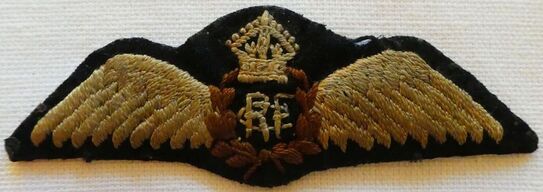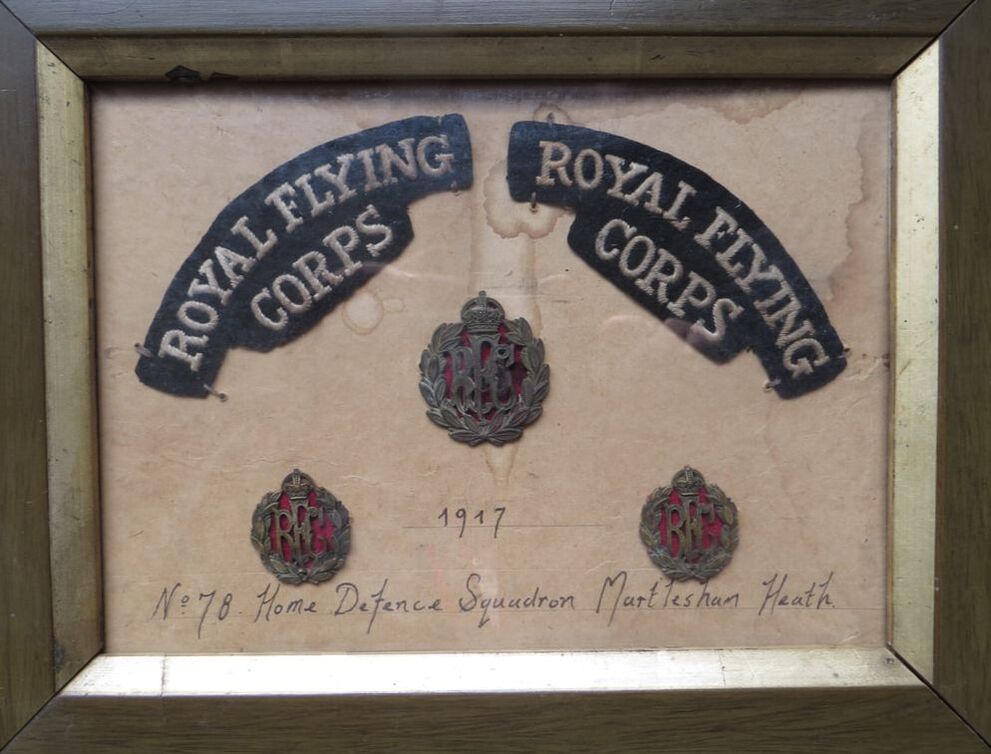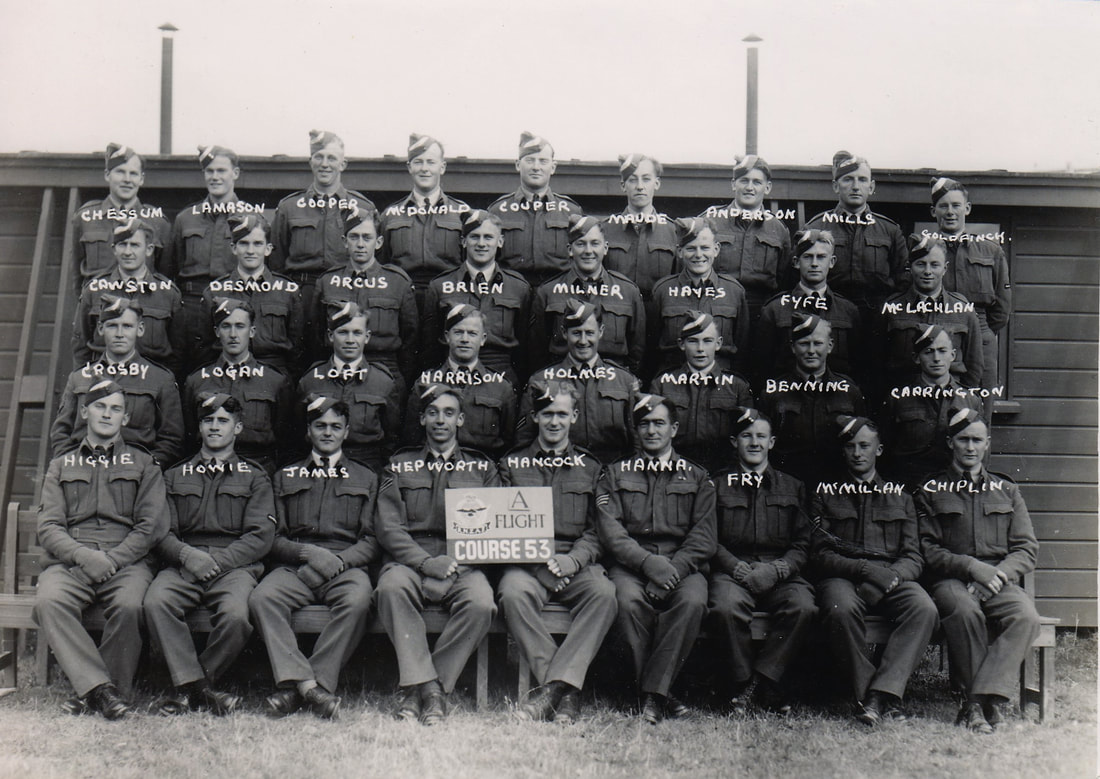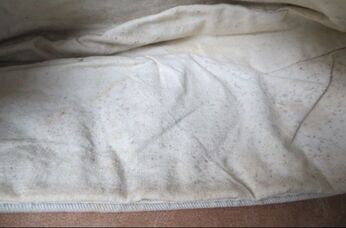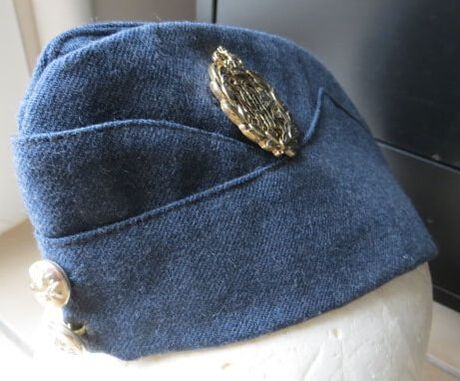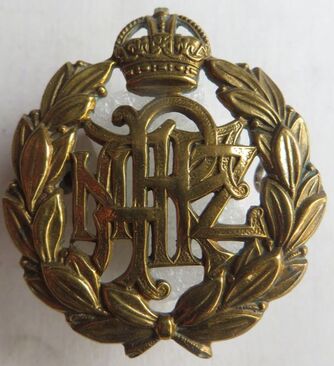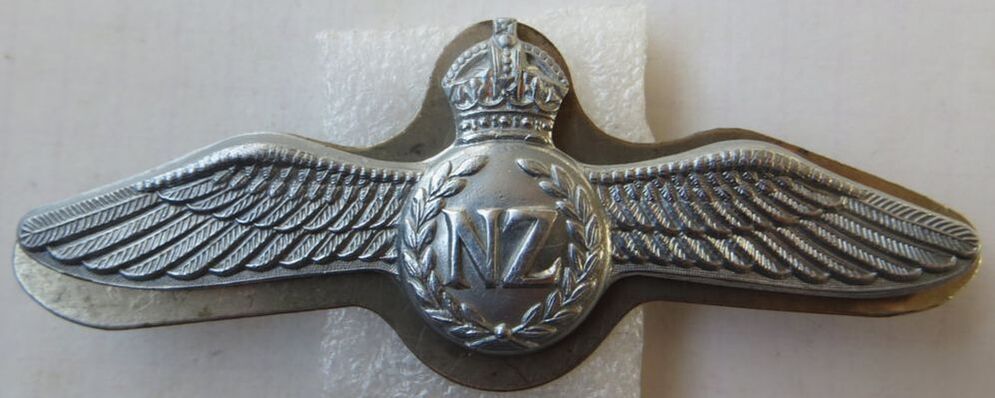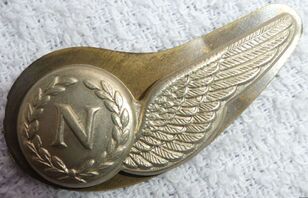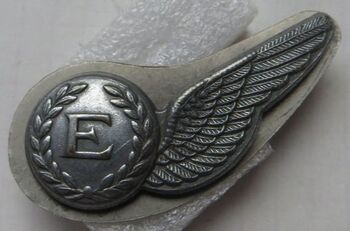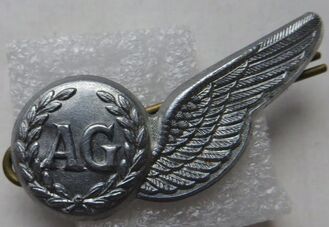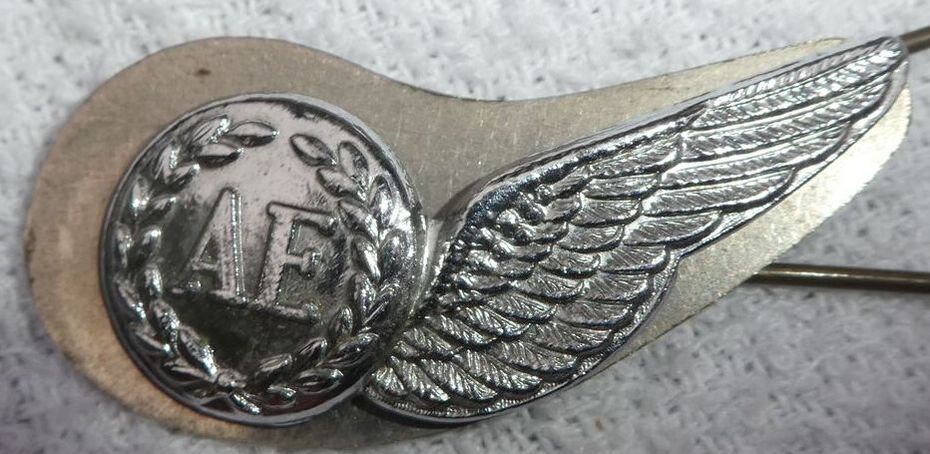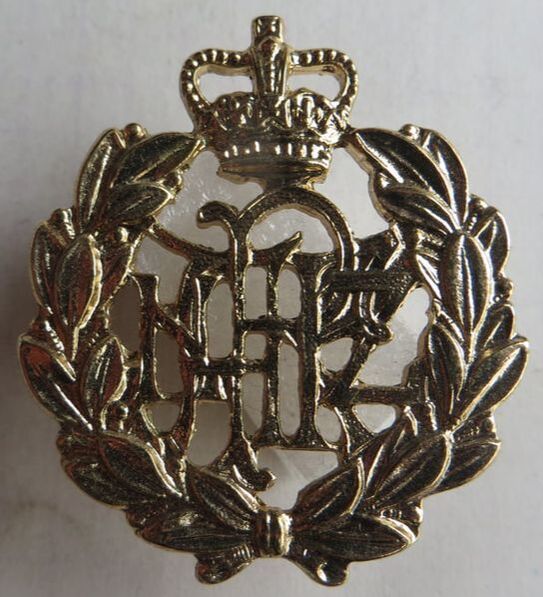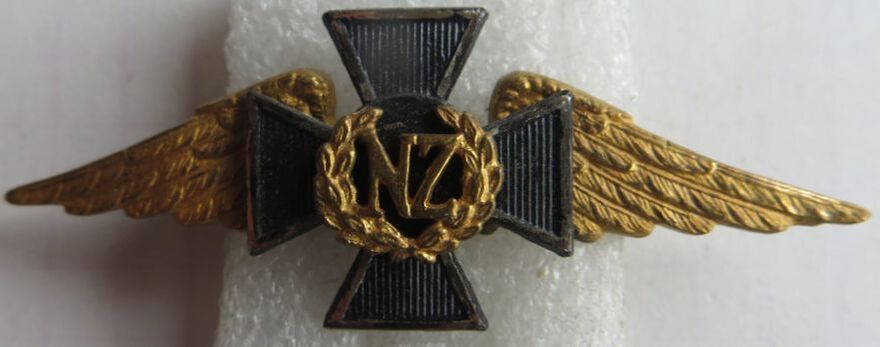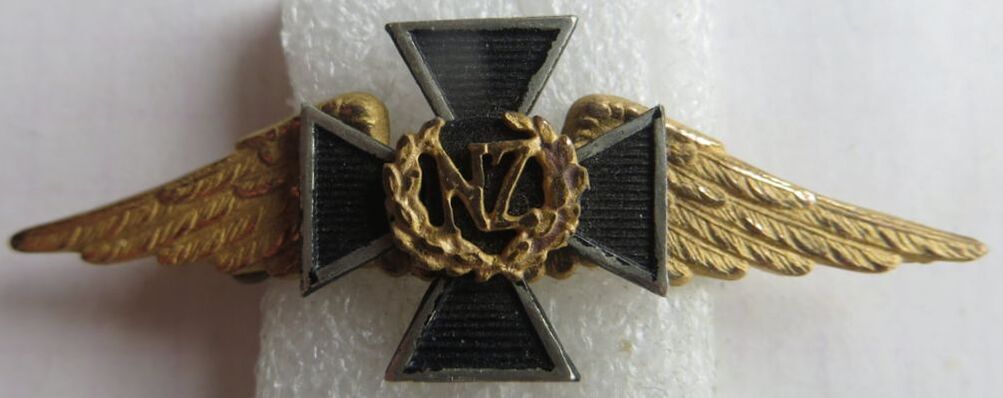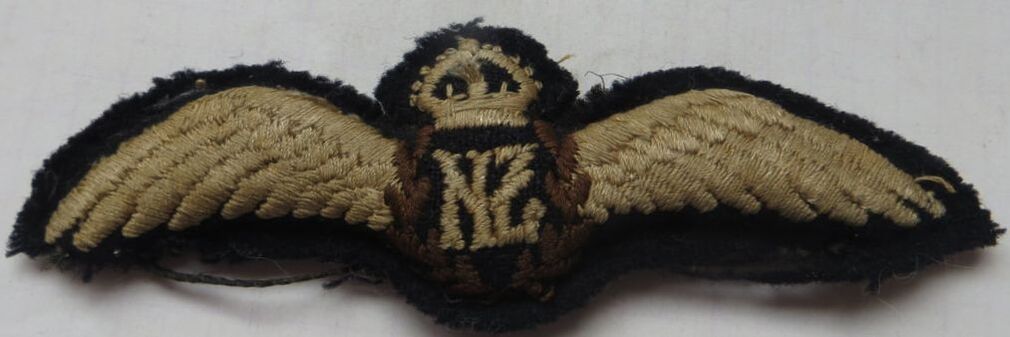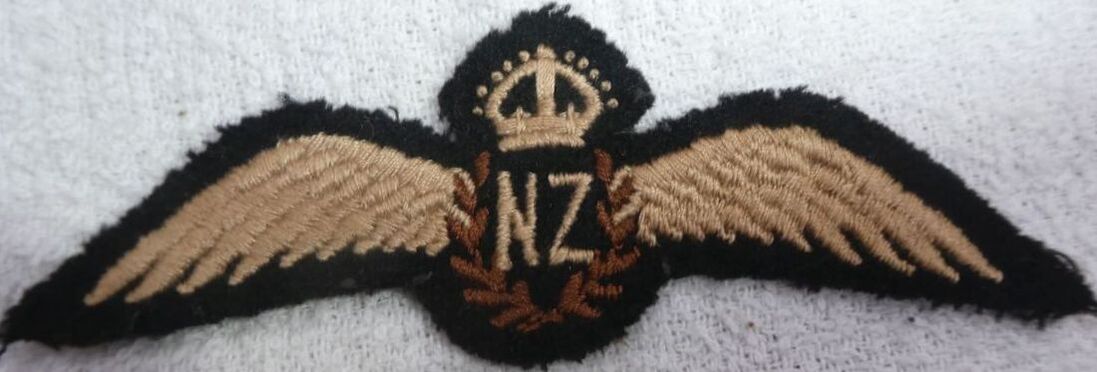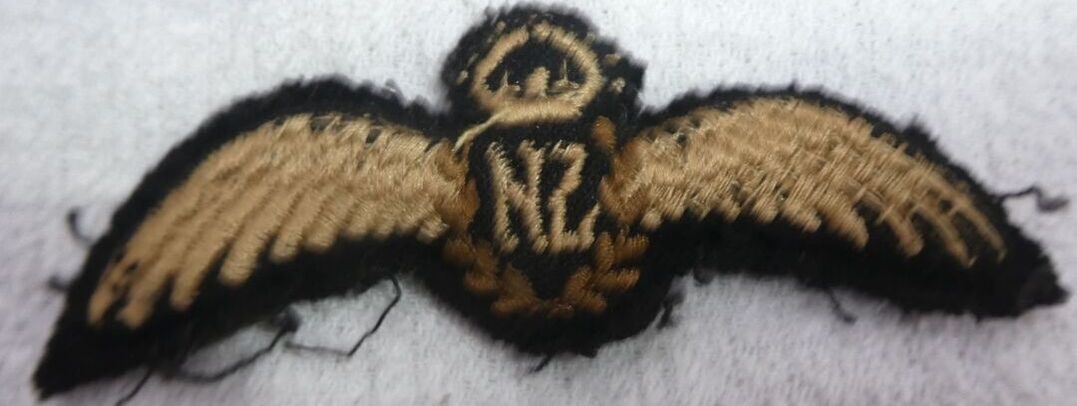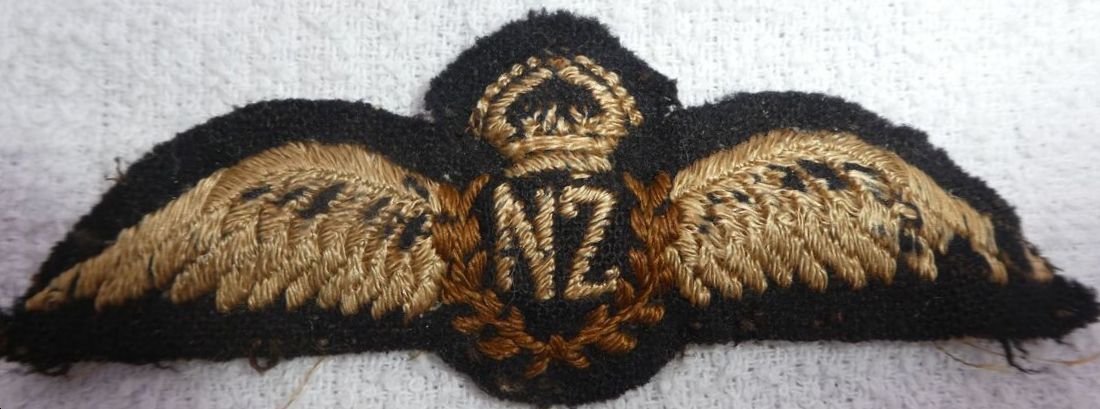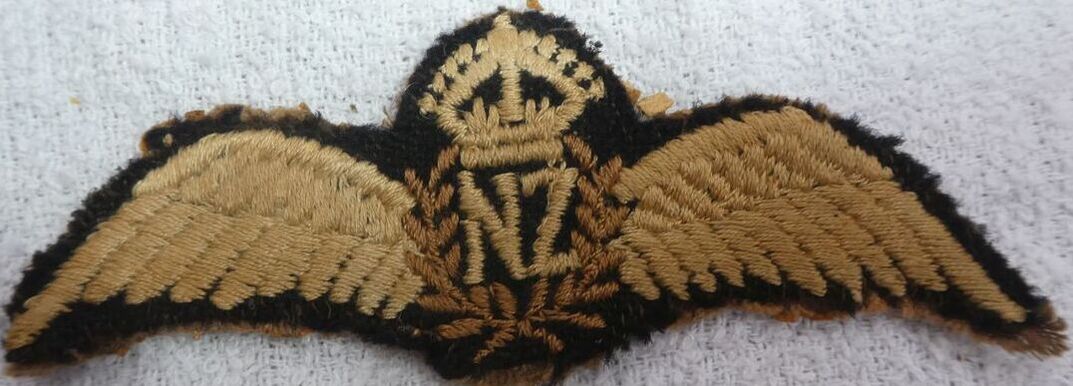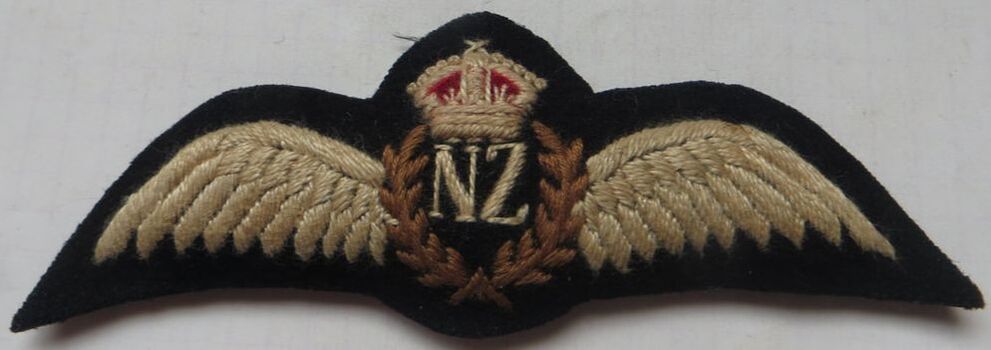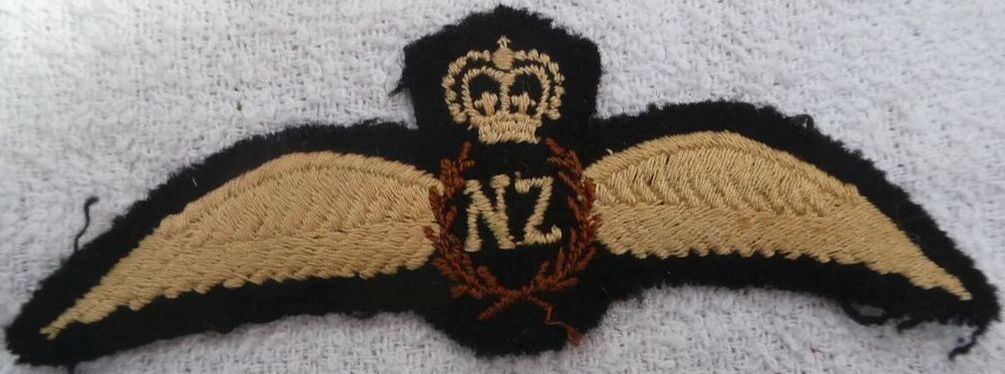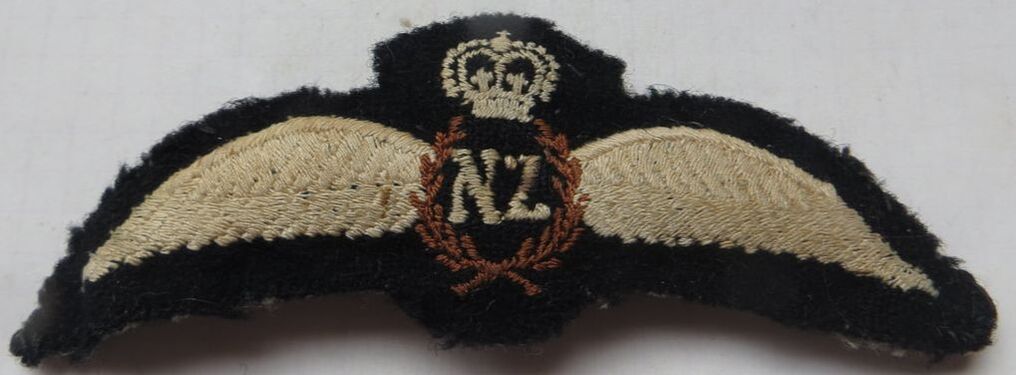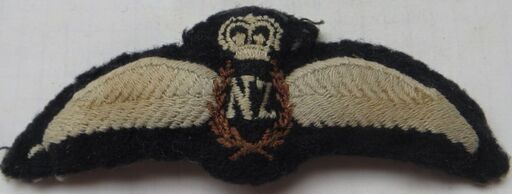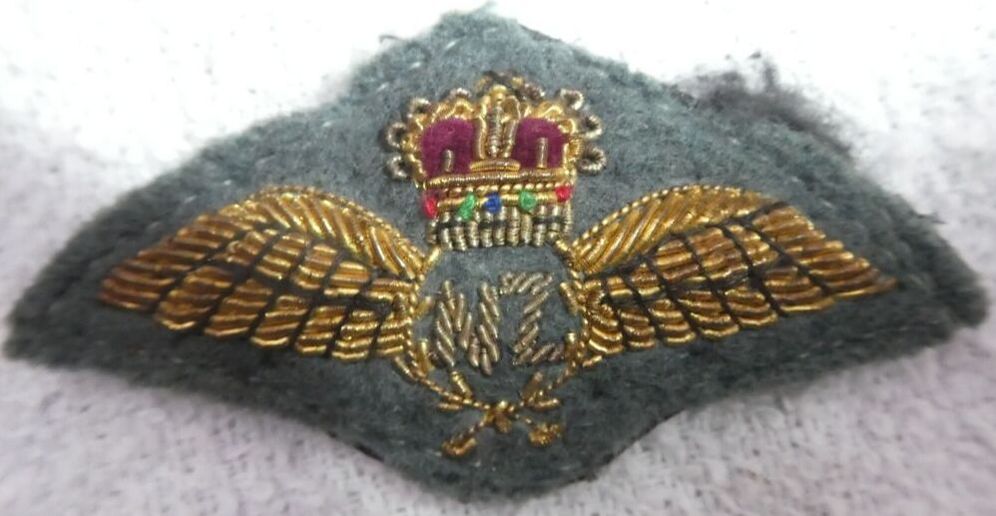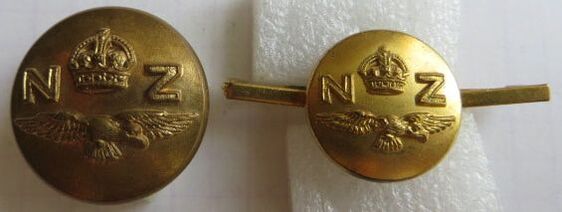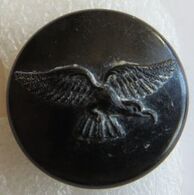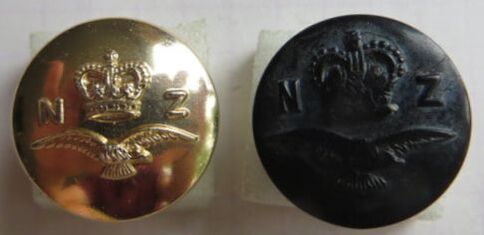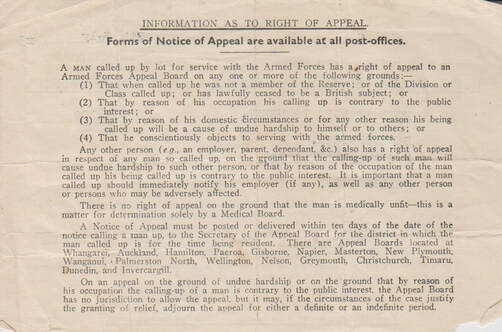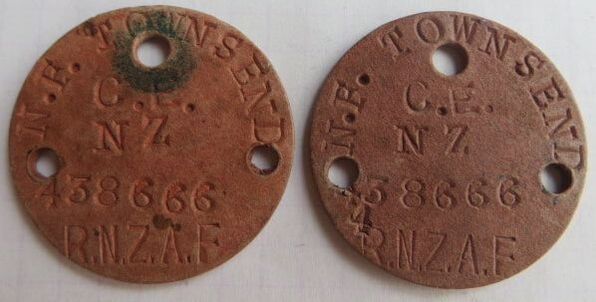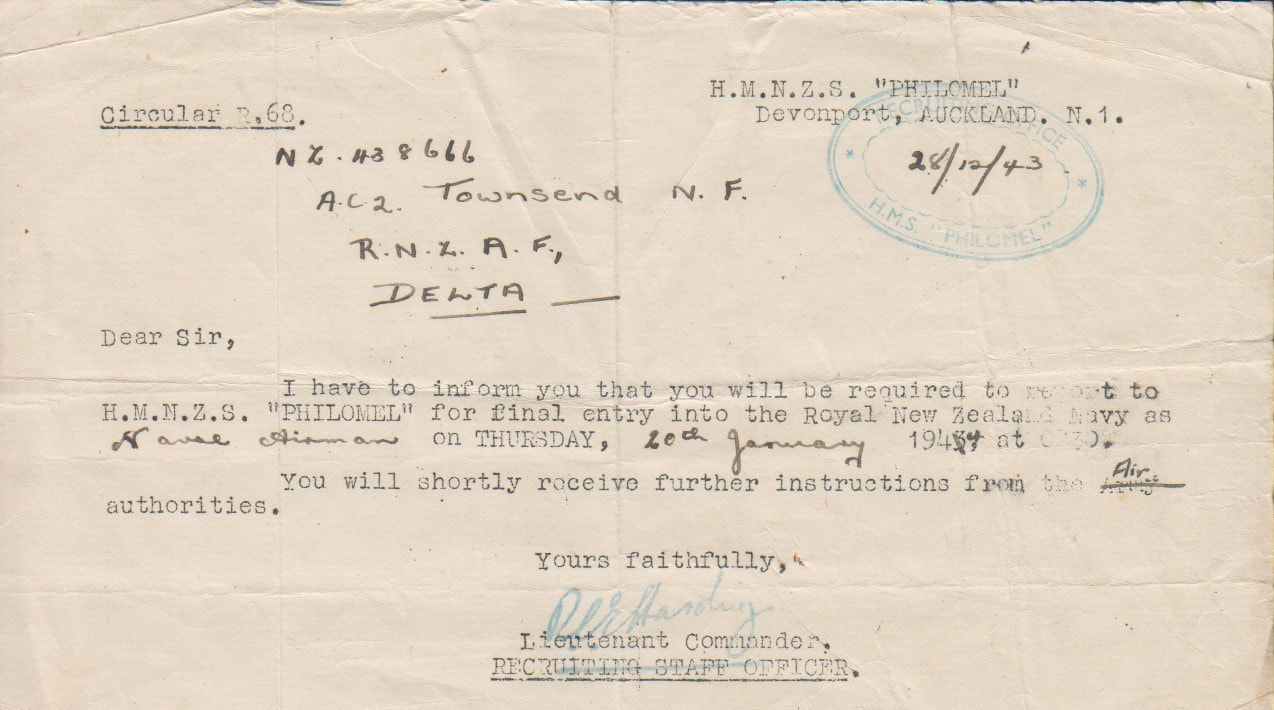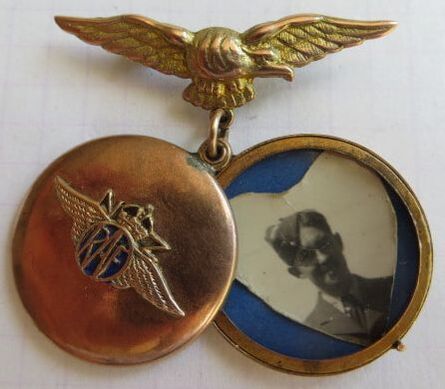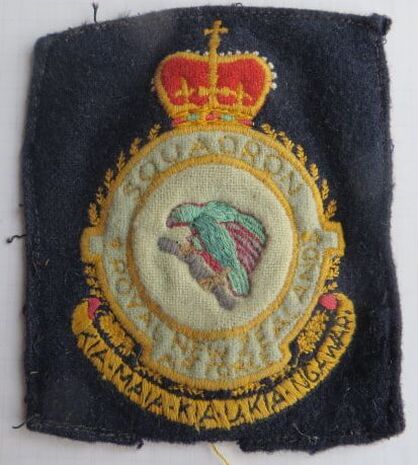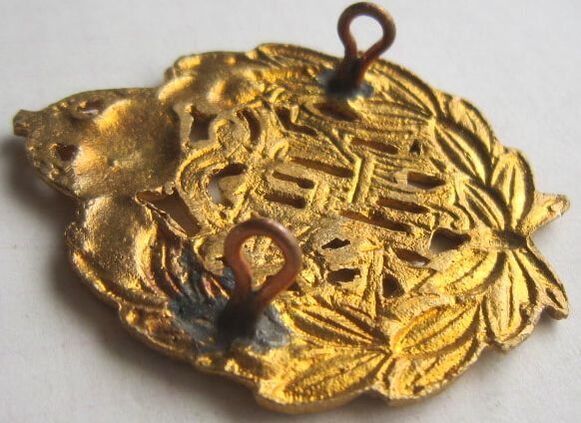Royal New Zealand Air Force
New Zealand, like many of the other Commonwealth countries of the time. looked to England for guidance with regards to forming its own Air Force.
Throughout the First World War, Kiwi's served with distinction in the Royal Flying Corps, but it wasn't until 1923 and the offer of planes from the UK that they took initially reluctant steps to set up their own Air Force.
On the 14th of June, 1923, the New Zealand Permanent Air Force was gazetted, as part of the New Zealand Army, consisting of 4 Officers and 2 other ranks full time, while 102 Officers were assigned as part of the New Zealand Air Force (Territorial), as reservists.
The first base was located outside Christchurch, at Sockburn, using the gifted planes from the UK. Later, this airfield was to be renamed "RNZAF Station Wigram" after Sir Henry Wigram, a New Zealand businessman and politician of the time, who donated both the land and money to purchase better planes.
In 1934 the New Zealand Permanent Air Force (NZPAF) was renamed the Royal New Zealand Air Force (RNZAF).
In 1937 the RNZAF became a interdependent organisation within the New Zealand Defence Force.
Throughout the First World War, Kiwi's served with distinction in the Royal Flying Corps, but it wasn't until 1923 and the offer of planes from the UK that they took initially reluctant steps to set up their own Air Force.
On the 14th of June, 1923, the New Zealand Permanent Air Force was gazetted, as part of the New Zealand Army, consisting of 4 Officers and 2 other ranks full time, while 102 Officers were assigned as part of the New Zealand Air Force (Territorial), as reservists.
The first base was located outside Christchurch, at Sockburn, using the gifted planes from the UK. Later, this airfield was to be renamed "RNZAF Station Wigram" after Sir Henry Wigram, a New Zealand businessman and politician of the time, who donated both the land and money to purchase better planes.
In 1934 the New Zealand Permanent Air Force (NZPAF) was renamed the Royal New Zealand Air Force (RNZAF).
In 1937 the RNZAF became a interdependent organisation within the New Zealand Defence Force.
Private Flying Schools in New Zealand

During WW1 a number of Flying Schools were set up in New Zealand to train men to a standard to gain their "ticket" to the UK and fly with the Royal Flying Corps. One of these was the New Zealand Flying School, operated by the Walsh Brothers (Leo & Vivian), who flew Sea planes initially from Ōrākei in October 1915 and then moved to Mission Bay on Auckland's Waitemata Harbour. Over 100 pilots were trained at the school by War's end. The school continued until 1924, when it was bought by the New Zealand Government. By this stage over 1000 pilots had passed through its doors.
Its students wore two badges to their WW1 Army Officers uniform. One on the Cap, while another was worn on the left breast, just above the tunic pocket. Both appear to be the same design to front, but the Cap badge is curved and has two lugs to back, while the breast badge is brooched.
- Above Right: A two piece, silver and enamel Cap badge to the Walsh Brothers Auckland New Zealand Flying School. Note the Red enamel to center, White enamel to wings and Blue to banner. This badge has two copper lugs to back and is curved to fit the hat.
Its students wore two badges to their WW1 Army Officers uniform. One on the Cap, while another was worn on the left breast, just above the tunic pocket. Both appear to be the same design to front, but the Cap badge is curved and has two lugs to back, while the breast badge is brooched.
- Above Right: A two piece, silver and enamel Cap badge to the Walsh Brothers Auckland New Zealand Flying School. Note the Red enamel to center, White enamel to wings and Blue to banner. This badge has two copper lugs to back and is curved to fit the hat.
|
- Above: A side view of the above Cap badge to the New Zealand Flying School. Note the long lugs to back, and the curved shape, which would need to be done prior to enameling. Maker marks of "STERLING", "AUCK" and "WATTS" to lower back for Ruben Watts. It has the engraved initials of "L.H." to center back.
|
- Above: A two piece, silver and enamel breast badge to the Walsh Brothers Auckland New Zealand Flying School. Brooch fitting , with maker marks of "STERLING", "AUCK" and "WATTS" to lower back for Ruben Watts (image from the internet).
|
- Above Right: A two piece, gold and enamel badge to the Walsh Brothers Auckland New Zealand Flying School. Brooch fitting to back, with a loop through one wing edge, which has a safety chain and pin attached. No maker mark other "9CT" stamped to back base of badge (Image from the internet).
RFC Cloth Insignia
The following wings are from Ian Hamilton's superb collection
|
- Above: A embroidered thread and cloth Royal Flying Corps Pilots (R.F.C) wing. Red/brown wreath to center with evidence that they have been removed from a uniform (Ian Hamilton Collection).
- Above: A embroidered thread and cloth Royal Flying Corps Pilots (R.F.C) wing. Dark brown wreath to center with evidence that they have been removed from a uniform (Ian Hamilton Collection).
|
- Above: A similar embroidered thread and cloth Royal Flying Corps Pilots (R.F.C) wing. Lighter brown wreath to center with evidence that they have been removed from a uniform. Note they are quiet grubby/darkened with dirt/use (Ian Hamilton Collection).
- Above: A embroidered thread and cloth Royal Flying Corps Pilots (R.F.C) wing. Reddy brown wreath to center with evidence that they have been removed from a uniform. Note some wear to stitching on wing tip nearest sleeve, when worn (Ian Hamilton Collection).
|
|
- Above: A single piece, large, gilt brass shoulder title to the Royal Flying Corps (R.F.C). Two brass hex type lugs to back, with no maker mark. Size 19mm by 53mm. Note these were also worn by the Canadians up to 1920. From 17 May 1920, the Canadian Air Force (C.A.F) was formed.
- Opposite: A small glass fronted display frame of two Royal Flying Corps cloth shoulder titles and a Cap and Collar badge set with the "R.F.C" monogram. Underneath in ink are the words "1917, No.78 Home Defence Squadron Martlesham Heath". |
The research so far I have done has found no mention that No.78 Home Defence Sqn were ever based at Martlesham Heath, with their 1917 location given as Harrietsham, but there were detachments stationed at Telscombe Cliffs, Chiddingstone Causeway (later renamed Penshurst) until Sep 1917 and at Gosport until Jul 1917.
Martlesham Heath was the RFC's Aeroplane Experimental Unit from 1917, where they tested new aircraft and weaponry.
Martlesham Heath was the RFC's Aeroplane Experimental Unit from 1917, where they tested new aircraft and weaponry.
RAF Cloth Insignia
The Royal Flying Corps ceased to exist on the 1st of April 1918, as it merged with the Royal Naval Air Service to become the Royal Air Force (R.A.F).
|
- Above: A WW1 era embroidered thread and cloth Royal Air Force Pilots (R.A.F) wings. Brown wreath to center with evidence that they have been removed from a uniform (Ian Hamilton Collection).
|
- Above: A much later embroidered thread and cloth, padded Royal Air Force Pilots (R.A.F) wings. Later style, dark brown wreath to center with evidence that they have been removed from a uniform. Size 42mm by 119mm.
|
RNZAF Hats
|
- Above: A named New Zealand Officers hat of WW2 vintage, made by Burberrys of London. Kings crowned bullion and cloth insignia to front, with a gilt brass eagle to center on a black mohair band. Sadly the leather chin-strap is missing
|
- Above: The interior of this British made hat. As a Officer, Kiwi's were expected to outfit themselves, so it is common for British made items to be within a New Zealand Officers kit.
|
|
- Above: A other rank side cap to the Royal New Zealand Air Force. This has a single piece, RNZAF Cap badge in gilt brass to side and 2 small black Bakelite buttons to front with eagle and "NZ" to front.
Note the white peak to front, which was introduced in December 1940 to indicate the airman was under training as a Pilot, Air Gunner or Observer. |
- Above: The inside of the hat has no name or markings other than a white label with "R.N.Z.A.F", "Size" and a ink stamped "7 1/3" in inches. Note the black velvet band at the base of the label acting as a sweatband.
|
- Above: A 1944 image of the trainee Pilots at Ashburton's RNZAF No. 2 Elementary Flying Training School. Note the white peak to front of their side hats, which indicates they are under training.
|
- Above: A other rank side cap to the Royal New Zealand Air Force. This has a single piece, RNZAF Cap badge in gilt brass to side and 2 small gilt brass buttons to front with eagle and "NZ" to front.
|
- Above: The inside of the hat has a white label with "R.N.Z.A.F", "Size" and a ink stamped with "7 1/3" in inches. Named to "Amber" in ink.
|
|
- Opposite & Above: A British made side hat to a Warrant Officer in the RNZAF.
Finer Officer style Blue material, with 2 piece gilt brass Cap badge, which has thread posts to back and a brass backing plate to interior (just seen in top right corner above). Maker marked to "J COLLETT Ltd, London, 1944 (broadarrow mark) Size 7 1/8". It also has faint initials in pen to the previous owner. Note the Velvet sweatband to base of inside. The two 14mm buttons are marked "GAUNT LONDON" to back. |
|
- Opposite and Above: A very faded Pacific theater side hat to a Warrant Officer in the RNZAF. Light blue/grey material with a white cotton liner (sadly no markings), which is mildew marked.
The Cap badge is single piece, die stamped, with lugs removed and a brooch fitting to back. The two brass buttons to front, are kings crowned, with eagle and "NZ". They appear to be "J R Gaunt" made. |
|
- Above: A modern, other rank side cap to the Royal New Zealand Air Force. This has a single piece, Queens crown RNZAF Cap badge in anodised aluminium to side and 2 small anodised aluminium buttons to front with Queens crown, eagle and "NZ" to front in a silver tone.
|
- Above: The side hat has a clear maker mark of "Hills Hats Ltd", is dated 1973 and is a size "7" in inches.
|
|
- Above: A modern, Officers Side Hat to the Royal New Zealand Air Force. Bullion thread and material badge to side with a Gilt brass Eagle to center. Two anodised aluminium buttons to front with Queens crown, Eagle and "NZ" to front in a silver tone.
|
- Above: Faint names to inside in ink, with the maker label of "Made by Kaiapoi" to inside of sweatband.
|
RNZAF Metal Badges
Much of the Royal New Zealand Air Force uniform and insignia is based on what the British Royal Air Force wore at the time. There are some exceptions.
Kiwi's fought during WW2 as part of the Royal Air Force, as part of New Zealand squadrons attached to the Royal Air Force, or as the war in the pacific expanded, as stand-alone New Zealand Air Force units.
Officers during WW2, provided their own uniforms, and New Zealand Air Force Officers wore the same insignia as their British counter-parts (except for shoulder titles).
Other ranks, wore the Royal New Zealand Air Force Cap badge on their side hats.
Kiwi's fought during WW2 as part of the Royal Air Force, as part of New Zealand squadrons attached to the Royal Air Force, or as the war in the pacific expanded, as stand-alone New Zealand Air Force units.
Officers during WW2, provided their own uniforms, and New Zealand Air Force Officers wore the same insignia as their British counter-parts (except for shoulder titles).
Other ranks, wore the Royal New Zealand Air Force Cap badge on their side hats.
|
- Above: A darkened copper Cap badge to the RNZAF. Two copper looped wire lugs to back. No maker mark. Size 44mm by 39mm.
|
- Above: A gilt brass Cap badge to the RNZAF. Two copper looped lugs to back with the maker mark "Scully Ltd, Montreal". Size 47mm by 39mm.
|
- Above: A dulled brass Cap badge to the RNZAF. Two copper looped wire lugs to back. No maker mark. Size 45mm by 40mm.
|
|
- Above: A gilt brass Cap badge to the RNZAF. Two copper D shaped looped lugs to back. No maker mark. Size 44mm by 39mm.
Note I have seen J R Gaunt plaqued badges (its found behind the crown), but they are scarce. |
- Above: A chromed Cap badge to the RNZAF. Two chromed looped wire lugs to back. No maker mark. Size 44mm by 40mm.
|
- Above: A silvered Cap badge to the RNZAF. Brooch fitting to back, with the maker mark "M & K, W" for Mayer and Kean, Wellington at back base. Size 44mm by 40mm.
|
New Zealand, since the beginning of WW2, had always maintained an Air Force and Air Defences due to the presents of German raiders in the Pacific. From 1941 with Japans entry into WW2 and its conquest of vast area's to the north of New Zealand, the Government, with the help of the British Government, rapidly expanded the RNZAF to defend against what it though was imminent invasion by Japanese Forces. From 1943, its allies shifted from a defense to a attacking roll, and New Zealand's Air Force was deployed in tropical area's, taking the fight to the enemy.
At its peak, the Royal New Zealand Air Force had 34 squadrons, 25 were based outside NZ in the Pacific.
Due to high humidity, cloth material was found rot at high rates, to counter this, in 1944, the NZ Government authorised the wearing of metal qualification insignia.
At its peak, the Royal New Zealand Air Force had 34 squadrons, 25 were based outside NZ in the Pacific.
Due to high humidity, cloth material was found rot at high rates, to counter this, in 1944, the NZ Government authorised the wearing of metal qualification insignia.
|
- Above: A set of Royal New Zealand Pilots wings in plated brass with its backing plate and long white metal pin. Maker marked to "44, M & K, W" for 1944, Mayer & Kean, Wellington.
|
- Above: A back view of the same set of metal Royal New Zealand Pilots wings. Note the white metal split pin, which is often lost with time. Size of badge is 25mm by 74mm, white metal backing plate is 30mm by 79mm.
|
|
- Above: A set of Royal New Zealand Pilots wings in white metal with its backing plate and a brass pin. Maker marked to "44, M & K, W" for 1944, Mayer & Kean, Wellington.
|
- Above: A back view of the same set of metal Royal New Zealand Pilots wings. Note the replacement brass pin. Size of badge is 26mm by 75mm, white metal backing plate is 30mm by 79mm.
|
|
- Above: A Royal New Zealand "N" Navigators half wing. In white metal, with two looped lugs to back, and maker marked to "M & K, W" for Mayer and Kean, Wellington. Size is 16mm at widest point and 45mm long.
|
- Above: A Royal New Zealand "E" Engineers half wing. In white metal with backing plate, with two looped lugs to back, and maker marked to "M & K, W" for Mayer and Kean, Wellington. Badge size is 16mm at widest point and 45mm long, while the plate is 22mm at widest point and 48mm long.
|
- Above: A Royal New Zealand "E" Engineers half wing. Silver plated Brass, with white metal backing plate and split pin (Ian Hamilton Collection).
|
|
- Above: A Royal New Zealand "AG" Air Gunners half wing. Missing its backing plate, but white metal, with two looped lugs to back, and maker marked to "M & K, W" for Mayer and Kean, Wellington. Size is 16mm at widest point and 45mm long.
|
- Above: A silver plated Brass Royal New Zealand "AG" Air Gunners half wing. Brass backing plate (Ian Hamilton Collection).
|
- Above: A "S" half wing in Silver plated Brass for Signaler in the Royal New Zealand Air Force.
Many of these seem to have been made from excess "N" or Navigators half wings, with a "S" added to the front, but you can still see the impression of the "N" to back. Believed to be post WW2. |
Post 1952, the Royal New Zealand Air Force updated its insignia with a Queens crown. It continues to also wear metal insignia to its Summer uniforms. So care need to be taken when collecting the metal half-wings as they only started to add a crown to the top post 1985. Between 1952 and 1985, the half wings tend to be chromed metal, rather than white metal or plated brass, which seems to be a feature of the 1944 to 1952 versions only.
|
- Above: A chrome set of Royal New Zealand Air Force Pilot wings, with large backing plate. Worn from 1952 to 1985. The post 1985 set have a small crown, and wider wings. Semi-solid to back, with no maker mark.
|
- Above: A back few of the same queens crown pilots wings. Two looped lugs, with size of badge being 29mm by 78mm. The backing plate is 38mm by 95mm.
|
|
- Above: A chrome set of Royal New Zealand Air Force Pilot wings with Queens Crown (Ian Hamilton Collection).
|
- Above: A post 1985 set of Royal New Zealand Air Force Pilot wings with Queens Crown. Note the small crown and also background to center, behind the "NZ", which has a crossed line pattern (Ian Hamilton Collection).
|
1952 to 1985 half wings come in "E", "LM", "AO", "HC", "N", "AE", "S", "QM" and Para.
|
- Above: A chrome half wing for Air Ordnanceman (AO) of Royal New Zealand Air Force (Ian Hamilton Collection).
|
- Above: A chrome half wing for Air Electronics Operator (AE) of Royal New Zealand Air Force (Ian Hamilton Collection).
|
- Above: A chrome half wing for Signaler (S) of Royal New Zealand Air Force (Ian Hamilton Collection).
|
1985 to current half wings, with crown, come in "AW", "E", "LM", "AO", "HC", "FS", "N", "AE" and Para.
|
- Above: A gilt brass, queens crown Cap badge to the RNZAF. Two thick copper looped wire lugs to back. No maker mark. Size 44mm by 40mm.
|
- Above: A gilt brass, queens crown Cap badge to the RNZAF. Two copper lugs to back. No maker mark. Size 44mm by 39mm. Note a slight change in crown style to top.
|
- Above: A anodised aluminium, queens crown Cap badge to the RNZAF. Solid to back, with two pins to be used with clutches to back. No maker mark. Size 43mm by 39mm.
|
Prior to WW2, no Chaplains were permanently allocated to the RNZAF. Instead they served on a voluntary basis. It wasn't until 1940, and the greatly expanded RNZAF, did the RNZAF have permanently appointed members to the branch. They worn the British RAF badges of the time.
|
- Above: A later, tanged or bladed version of the British Chaplains badge, as its marked "J R Gaunt Bham" to back. Size 19mm by 54mm.
|
- Above: A early brooched version of the RAF Chaplains Department. Maker marked to "J R Gaunt London". Note the "S" stamped to the back, left hand side, for Silver. Size 19mm by 54mm.
|
In 1956, a specific badge was introduced for the Royal New Zealand Air Force Chaplains Branch. Prior to this date they wore the same badge but with "RAF to center".
These "NZ" versions formed part of a Cap, side hat and/or collar badge in gilt fired brass and darkened silver or silver like (not marked) metal, to the Royal New Zealand Air Force Chaplains Branch.
These "NZ" versions formed part of a Cap, side hat and/or collar badge in gilt fired brass and darkened silver or silver like (not marked) metal, to the Royal New Zealand Air Force Chaplains Branch.
- Above: A similar Royal New Zealand Air Force Chaplains Branch badge which has a different brooch fittings to back and a maker marked to "J R Gaunt, Bham".
It has been mentioned that there was also a winged "Star of David" badge for RNZAF Jewish Chaplains, introduced at the same time as the above badge, in 1956. I have yet to see one.
|
- Above: A modern, Queens crown badge for attachment to the peaked Officers Cap to the Royal New Zealand Air Force Chaplains. The metal badge to center has two screw posts to back, which go through the padded cloth badge. No maker mark to back.
|
- Above: A modern queens crown, multi piece gilt metal and black badge to the Royal New Zealand Air Force Chaplains. This is to wear on the side-hat and has the silver metal backing plate. No maker mark to back.
|
RNZAF Cloth Insignia
The Royal New Zealand Air Force based much of its uniform on the British Royal Air Force style of the time. Here are some of the cloth and material exceptions to insignia the RNZAF wore.
|
- Above: A embroidered thread and black material backed pilots wings to the Royal New Zealand Air Force. Yellow wreath to center. Flat, with no backing material except for a small piece of hessian light brown material behind the crown. It has two popper fasteners sewn to back to allow for easy removal/addition to a tunic. No maker mark and size is 39mm by 101mm.
|
- Above: A similar embroidered thread and black material backed pilots wings to the Royal New Zealand Air Force. Yellow wreath to center. Flat, with traces of brown wax paper backing and a small piece of hessian light brown material behind the crown.. No maker mark and size is 33mm by 98mm.
|
|
- Above: Again similar embroidered thread and black material backed pilots wings to the Royal New Zealand Air Force. Yellow wreath to center. Flat, but with a slightly raised center and a small piece of hessian light brown material behind the crown.. No maker mark and size is 36mm by 100mm.
|
- Above: A embroidered thread and black material backed pilots wings to the Royal New Zealand Air Force. Tan brown wreath to center. Padded, with a dark material backing. These wings have been sewn around the edge, and three poppers have been attached for easy addition/removal from the tunic. No maker mark and size is 32mm by 105mm.
|
|
- Above: A photo of NZ436179 Rex Keith Niederer of Invercargill. Sadly Rex was killed while flying a Mosquito in France as part of 488 Squadron, on the 8th of January 1945. Note Rex appears to be wearing a slightly padded version of the New Zealand Pilots wings to his tunic.
|
- Above: A embroidered thread and black material backed pilots wings to the Royal New Zealand Air Force. Brown wreath to center. Padded, with a dark material backing. No maker mark and size is 35mm by 123mm.
- Above: A embroidered thread and black material backed pilots wings to the Royal New Zealand Air Force. Dark brown wreath to center. Padded, with a dark material backing. No maker mark and size is 36mm by 110mm.
|

- Opposite: A embroidered thread and black material backed pilots wings to the Royal New Zealand Air Force. Tan brown wreath to center. Flat, with a dark material backing. No maker mark and size is 42mm by 110mm.
|
- Above: A well worn set of RNZAF pilot wings with Tan/Brown wreath to center. Note the backing material with a different weave (Ian Hamilton Collection).
|
- Above: Another well worn set of RNZAF pilot wings with Tan/Brown wreath to center. Note the backing material with a different weave (Ian Hamilton Collection).
|
|
- Above: A set of RNZAF pilot wings with Tan/Brown wreath to center. Note the backing material with a different weave (Ian Hamilton Collection).
|
- Above: A well worn set of RNZAF pilot wings with Tan/Brown wreath to center. Note the colour to the jewels at base of crown and weave to backing material. It also has extra black threads to wings to define the feathers (Ian Hamilton Collection).
|

- Opposite: A worn, but superb set of wings worn by NZ1957 Cecil William Mills who was a Pilot with the RNZAF during WW2. He left New Zealand onboard the USAT Sea Barb, a US Army Transport ship. Training was at RCAF, 36 Service Flying Training School, Penhold, Alberta, Canada, where he graduated, and then went onto RCAF, 1 General Reconnaissance School, Summerside, Prince Edward Island, Quebec, Canada.
(Ian Hamilton Collection).
(Ian Hamilton Collection).

- Opposite: A superbly detailed, padded pair of pilots wings which came with three letters from WW2 NZ415032 Flying Officer Douglas Bertrand Skellon. He enlisted on the 7th of Sept 1941, and did three tours with 15th Squadron, in the Pacific, flying one tour with Corsairs and two with Kittyhawkes.
These wings are well padded, with fine black thread highlighting the feathers on the wings. A reddy brown wreath to center.
A wax paper lining to back over a dark backing cloth.
These wings are well padded, with fine black thread highlighting the feathers on the wings. A reddy brown wreath to center.
A wax paper lining to back over a dark backing cloth.
|
- Above: A set of RNZAF pilot wings with Red Brown wreath to center (Ian Hamilton Collection).
- Above: A set of RNZAF pilot wings with light Brown wreath to center (Ian Hamilton Collection).
|
- Above: A set of RNZAF pilot wings with light Brown wreath to center (Ian Hamilton Collection).
- Above: A set of RNZAF pilot wings with Brown wreath to center (Ian Hamilton Collection).
|

- Opposite: A set of RNZAF pilot wings with Red Brown wreath to center (Ian Hamilton Collection).
Like most Commonwealth countries, New Zealand took advantage of the Wartime British Commonwealth Air Training Plan (BCATP), or Empire Air Training Scheme (EATS). Both are often just referred to as "The Plan", which was a massive, joint military aircrew training program which took Kiwi's and trained them as Pilots and Aircrews. New Zealand also had its own training stations or bases, but many Kiwi's went to Canada to train in this scheme.
The below wings are unusual in that they have red in the crown, which the Canadian Air Force Regulations allowed, but not the British/New Zealand. Much metal and cloth insignia was produced locally by Canadian manufacturers at the time, to the Kiwi's in Canada, as they qualified.
The below wings are unusual in that they have red in the crown, which the Canadian Air Force Regulations allowed, but not the British/New Zealand. Much metal and cloth insignia was produced locally by Canadian manufacturers at the time, to the Kiwi's in Canada, as they qualified.
|
- Above: A embroidered thread and black material backed pilots wings to the Royal New Zealand Air Force. Reddy brown wreath to center, with the half red filled crown. Flat, with no backing material except for old paper as this seems to have been removed from an album. No maker mark and size is 43mm by 112mm.
|
- Above: A embroidered thread and black material backed pilots wings to the Royal New Zealand Air Force. Tan brown wreath to center, with the full red filled crown. Padded, with a dark backing material. No maker mark and size is 41mm by 115mm.
|

Opposite: A embroidered thread and black material backed pilots wings to the Royal New Zealand Air Force. Note the center, with the letters "RNZAF", and with red wreath and red fill in crown (now very faded). No maker mark and size is 38mm by 107mm.
|
- Opposite, above and below are items belonging to NZ4212851 Alan Landers Maclean. Alan was sent to Canada, and trained at the Royal Canadian Air Force's 34 Service Flying Training School, at Medicine Hat, Alberta.
He took part in Course 1, Class 83. and graduated on the 1st of Oct 1943. According to a relative who I obtained the items from, he flew in England and eventually returned to New Zealand to farm. - Opposite: A Officers peaked cap badge of gilt brass and bullion thread. Black paper backing, but not maker marked. - Above: A bullion thread and cloth set of Officers New Zealand Pilots wings. Padded, with a black paper backing. No maker mark. |
|
- Above: A cast silver(? - not marked to back) sweethearts badge to the RNZAF. Broach fitting to back, but no maker mark.
- Opposite: A silver New Zealand Silver Returned Services Association Kings crown badge with paid membership tab for 1982 attached (Alan passed on the 2nd of May 1983). Badge is stamped to back "NZ 4212851". Note it has the long brass pin to back, instead of a brooch fitting. |
|
- Above: A kings crown, bullion Pilots wings to the Royal New Zealand Air Force (Ian Hamilton Collection).
- Above: A kings crown, thread and bullion Pilots wings to the Royal New Zealand Air Force (Ian Hamilton Collection).
|
- Above: A prototype (?) or variation of kings crown, bullion Pilots wings to the Royal New Zealand Air Force (Ian Hamilton Collection).
- Above: A kings crown, gilt bullion Pilots wings to the Royal New Zealand Air Force (Ian Hamilton Collection).
|
|
- Above: A selection of different Observer (O) half wings, worn by both RAF and RNZAF personnel (Ian Hamilton Collection).
- Opposite: A selection of different Navigator (N) half wings, worn by both RAF and RNZAF personnel. Note the one with the crown, which is a Canadian made one (Ian Hamilton Collection). |
|
- Opposite: A selection of different Air Gunner (AG) half wings, worn by both RAF and RNZAF personnel. Note there is also a Wireless Air Gunner (WAG) in the bottom right (Ian Hamilton Collection).
- Above: A selection of different Signaller (S) half wings, worn by both RAF and RNZAF personnel (Ian Hamilton Collection). |
|
- Above: A selection of different Air Electronics Officer/Operator (AE) half wings, worn by both RAF and RNZAF personnel (Ian Hamilton Collection).
|
- Above: A selection of different Wireless Air Gunner (WAG) half wings, worn by both RAF and RNZAF personnel. Note the bottom Brevet is a Canadian made one, with Crown (Ian Hamilton Collection).
|
|
- Above: Two Canadian made WW2 Wireless Air Gunner (WAG) half wings, to the RNZAF (Ian Hamilton Collection).
|
- Above: A selection of different Mess Dress half wings, worn by both RAF and RNZAF personnel. They include Observer (O), Navigator (N), Engineer (E), Air Electronics Officer/Operator (AE), Signaler (S) and Parachute Jump Instructor (a parachute - Ian Hamilton Collection).
|
With a change in monarch in 1952, the Royal New Zealand Air Force updated its insignia with the new Queens crown.
|
- Above: A embroidered thread and black material backed pilots wings to the Royal New Zealand Air Force. Note the Queens crown, with a brown wreath to center. Padded, with a piece of Velcro to center back, and two poppers at either top of the wing, for easy removal/addition to a tunic. Dark backing material, but no maker mark and size is 40mm by 115mm.
|
- Above: A similar embroidered thread and black material backed pilots wings to the Royal New Zealand Air Force. Note the Queens crown, with a brown wreath to center. Padded, with dark backing material, but no maker mark and size is 37mm by 112mm.
|

- Opposite: A modern queens crown, mess dress Pilots wings to the Royal New Zealand Air Force (Ian Hamilton Collection).
RNZAF Shoulder Titles.

All RNZAF wore a national title on their upper sleeve's. For Officers, this was just the words "NEW ZEALAND". Other ranks wore the same but with a Eagle beneath.
- Opposite: A bullion threaded Officers shoulder title on fine blue material. Off-white hessian type backing material.
- Opposite: A bullion threaded Officers shoulder title on fine blue material. Off-white hessian type backing material.

Opposite is a selection of national titles worn as a sew-in type on the upper shoulder of the service uniform of RNZAF personnel.
- Top: A light blue threaded national title on dark blue wool background. Dark blue hessian material backing cloth.
- 2nd Row: A matching pair of off-white letters on a dark blue wool background.
- 3rd Row: A matching pair of off-white letters on a dark blue wool background. The letters are very grubby to front. To back only one has a dark blue hessian backing cloth still.
- Bottom Row: A pair of light blue threaded letters on a dark blue wool background. Letters are bleached to front, and also bleaching is evident on the dark blue backing cloth.
- Top: A light blue threaded national title on dark blue wool background. Dark blue hessian material backing cloth.
- 2nd Row: A matching pair of off-white letters on a dark blue wool background.
- 3rd Row: A matching pair of off-white letters on a dark blue wool background. The letters are very grubby to front. To back only one has a dark blue hessian backing cloth still.
- Bottom Row: A pair of light blue threaded letters on a dark blue wool background. Letters are bleached to front, and also bleaching is evident on the dark blue backing cloth.
|
- Above: A Canadian made New Zealand national shoulder title made for RNZAF members training there. Off-white letters on a dark blue background. Grey coloured backing cloth to back.
- Opposite: A more commonly encountered pair of RNZAF type Eagles. Opposing, these are well worn with a bit of moth. They have threads around the edges, showing they have been removed from a uniform. |

- Opposite: A unissued pair of RNZAF national shoulder titles with opposing Eagles beneath. Light blue thread on a dark wool backing. Note the extra thread to center, to indicate where to cut when sewing onto a uniform. Black backing cloth to back.
|
- Above: A RNZAF matching national shoulder title pair for the khaki battle dress. Possibly made in Canada. Old khaki threads showing where it was sewn to a uniform are to edge.
|
- Above Top: A RNZAF National shoulder title for the Pacific theater of War. Machine embroidered in red thread on a light khaki material.
- Above Bottom: A RNZAF National shoulder title for the Pacific theater of War. Printed Red on a light khaki material. |
|
- Above Top: A embroidered in red thread RNZAF national title and eagle on thicker light khaki material backing.
- Above Middle: A embroidered in red thread RNZAF national title on thicker light khaki material backing. - Above Bottom: A slip-on national RNZAF title in red thread on a thick light khaki loop. |
- A slip-on rank slide to that of a Flight Lieutenant (two bars). Well worn, with much fraying and some moth to national title. On a light khaki shoulder loop.
|
|
- Above: A later pair of national shoulder titles to the Royal New Zealand Air Force. Light blue and black thread on a dark blue wool background. Backing mesh to back of one of the badges, while the other has a dark blue backing cloth.
|
- Above: Much later/modern shoulder titles to the Royal New Zealand Air Force. The top two rows are a matching pair, with light blue threaded lettering on a wool background, while the bottom title has a different style and colour of letter thread.
|

- Opposite: A 1970's era RNZAF slip-on shoulder title. Light khaki backing, with embroidered Black and white thread. They do come opposing, with the Eagle's head pointing either to the left or right. Size Approx 42mm by 62mm.
RNZAF Buttons.
The Royal New Zealand Air Force had its own unique uniform buttons. Here are a few examples with their makers.
|
- Above Left: A gilt brass, Kings Crown, fixed shank, 3 piece 19mm Mess Dress button to the Royal NZ Air Force. Separate Crown and Eagle applied to front. Maker mark to back to "Smith & Wright Ltd, Bham".
- Above Middle & Right: A pair of 13mm, Kings crown, fixed shank, gilt brass hat buttons, in three piece to the Royal NZ Air Force. Separate Crown and Eagle applied to front. Maker mark to back to "Gaunt, London, Eng". |
- Above Left: A gilt brass, Kings Crown, fixed shank, 23mm button to the Royal NZ Air Force. Maker mark to back to "Smith & Wright Ltd, Birmingham".
- Above Right: A gilt brass, Kings Crown, fixed shank, 17mm button to the Royal NZ Air Force. Maker mark to back to "Smith & Wright Ltd, Bham". |
|
- Above Left: A Kings crown, 23mm, gilt brass button to the Royal NZ Air Force. Fixed shank, with maker mark of "J R Gaunt, Montreal".
- Above Center: A Kings crown, 17mm, gilt brass button to the Royal NZ Air Force. Fixed shank, with maker mark of "J R Gaunt, Montreal". - Above Right: A Kings crown, 13mm, gilt brass hat button to the Royal NZ Air Force. Fixed shank, with maker mark of "J R Gaunt, Montreal". Like the Canadian maker W Scully Ltd of Montreal", Gaunt would have supplied these buttons to Kiwi members of the British Commonwealth Air Training Plan (BCATP), or Empire Air Training Scheme (EATS), which was held in Canada (among other places/countries) to train Pilots and Air Crews before moving them to theaters of war. |
- Above Left: A 23mm, fixed shank, gilt brass button to the Royal NZ Air Force. A large brass, wide shank to back. No maker mark.
During WW2, to conserve scarce resources, such as Brass, the RNZAF used Bakelite, an early form of plastic. - Above Left: A flat back, with brass loop, black 23mm plastic button to the Royal NZ Air Force. No maker mark. |
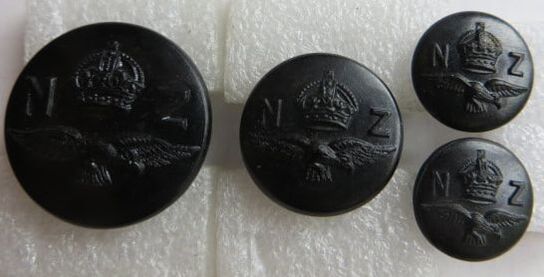
- Opposite Left: A 23mm, integrated shank, black Bakelite button to the Royal NZ Air Force. Maker marked to back, with a impressed "MP".
- Opposite Middle: A 17mm, integrated shank, black Bakelite button to the Royal NZ Air Force. Maker marked to back, with a impressed "MP".
- Opposite Right: A pair of 13mm, integrated shank, black Bakelite button to the Royal NZ Air Force. These are used on the front of the side-hat. Maker marked to back, with a impressed "MP".
- Opposite Middle: A 17mm, integrated shank, black Bakelite button to the Royal NZ Air Force. Maker marked to back, with a impressed "MP".
- Opposite Right: A pair of 13mm, integrated shank, black Bakelite button to the Royal NZ Air Force. These are used on the front of the side-hat. Maker marked to back, with a impressed "MP".

- Opposite Left: A Kings crown, 23mm, gilt brass button to the Royal NZ Air Force. Fixed shank, with maker mark of "J R Gaunt & Sons Ltd, London".
- Opposite Center: A Kings crown, 23mm, gilt brass button to the Royal NZ Air Force. Fixed shank, with maker mark of "Gaunt, London".
- Opposite Right: A Kings crown, 24mm, anodised aluminium, and brass backed button to the Royal NZ Air Force. Fixed shank, with maker mark of "Gaunt, London".
- Opposite Center: A Kings crown, 23mm, gilt brass button to the Royal NZ Air Force. Fixed shank, with maker mark of "Gaunt, London".
- Opposite Right: A Kings crown, 24mm, anodised aluminium, and brass backed button to the Royal NZ Air Force. Fixed shank, with maker mark of "Gaunt, London".

- Opposite Left & 2nd Left: A pair of Kings crown, 23mm, fixed shank, gilt brass button to the Royal NZ Air Force. Different shanks, one is in Brass, the other Copper. Both with maker mark of "Stokes & Sons, Melbourne".
- Opposite 2nd Right: A Kings crown, 17mm, gilt brass button to the Royal NZ Air Force. Fixed shank, with maker mark of "Stokes & Sons". Note this button may have had a dark finish to front.
- Opposite Right: A pair of Kings crown, 13mm, gilt brass side-hat button to the Royal NZ Air Force. Fixed shank, with maker mark of "Stokes Melb".
- Opposite 2nd Right: A Kings crown, 17mm, gilt brass button to the Royal NZ Air Force. Fixed shank, with maker mark of "Stokes & Sons". Note this button may have had a dark finish to front.
- Opposite Right: A pair of Kings crown, 13mm, gilt brass side-hat button to the Royal NZ Air Force. Fixed shank, with maker mark of "Stokes Melb".
|
- Above Left: A Kings crown, 23mm gilt brass button to the Royal New Zealand Air Force. Fixed shank, with the maker mark of "Firmin London".
- Above Right: A Kings Crown, 17mm gilt brass button to the Royal New Zealand Air Force mounted on a brooch bar. No shank to back, it has been removed. Maker marked to "Firmin London". |
- Above: A WW2 era plastic or Bakelite 22mm button to the Air Training Corps or ATC. They are the cadet force for the Royal New Zealand Air Force, and wore this single piece, molded button. Note there is no crown or NZ to front.
|
|
- Above Left: A anodised aluminium 23mm, Queens crown button to the Royal NZ Air Force. Fixed shank and maker marked to "Firmin, London". Two vent holes to back.
- Above Right: A anodised aluminium 17mm, Queens crown button to the Royal NZ Air Force. Fixed shank and maker marked to "Firmin, London". |
- Above Left: A anodised aluminium 17mm, Queens crown tunic button to the Royal NZ Air Force. Fixed shank to back, with two vent holes, but no maker mark.
- Above Right: A black plastic 18mm button, with Queens crown to the Royal NZ Air Force. Integrated shank to back. No maker mark. |
|
- Above Left: A 23mm anodised aluminium with brass backing, fixed shank, Queens Crown button to the RNZAF. Maker marked "Gaunt, London".
- Above Middle: A 17mm anodised aluminium with brass backing, fixed shank, Queens Crown button to the RNZAF. Maker marked "Gaunt, London". - Above Right: A 13mm anodised aluminium with brass backing, fixed shank, Queens Crown hat button to the RNZAF. Maker marked "Gaunt, London". |
- Above: A 23mm gilt brass, fixed shank, Queens Crown button to the Royal NZ Air Force. Maker marked "Stokes & Sons, Victoria".
|
Individuals.
Noel Francis Townsend enlisted just prior to his 18th Birthday.
He hailed from Evans Bay in Wellington New Zealand, and listed his occupation as a Banking Officer prior to his enlistment.
He hailed from Evans Bay in Wellington New Zealand, and listed his occupation as a Banking Officer prior to his enlistment.
- Above: His intentions were clear from the beginning, he wanted to join the Air Force, and applied for the RNZAF on the 23rd of March 1943.
- Above: Is a picture of the front and back of Noel's Enrollment Certificate, issued on the 7th of May 1943 to Noel by the New Zealand Government. This was issued to all men of service age called up under the National Service Emergency Regulations of 1940.
- Above: On the 8th of June 1943, he received the news he wanted, which was his posting to the RNZAF, and to Station Aerodrome Defence Unit, Base Harewood (in the South Island, by Christchurch - now Christchurch International Airport).
- Above: On the 27th of July 1943, Noel received his call up papers. This is a slip notifying him of his call up, and interestingly how to appeal if he feels this is not correct to back.
- Above: Noel's Royal NZ Air Force ID Card, and was given the service number of NZ438666.
- Opposite: At some stage later in 1943, Noel applied and was accepted to become a Naval Pilot. Above are his transfer orders, dated the 28th of Dec 1943, which indicated that he need to report to H.M.N.Z.S Philomel, the Royal New Zealand Naval Administration and Training base at Devonport, Auckland on the 20th of Jan 1944.
When Noel joined the Royal NZ Navy, his service number changed to NZ9015.
Like many Kiwi flyers, during WW2 he was sent overseas for training to Canada, and to St Eugine in Ontario, to No. 13 Elementary Flying Training School (EFTS)
When Noel joined the Royal NZ Navy, his service number changed to NZ9015.
Like many Kiwi flyers, during WW2 he was sent overseas for training to Canada, and to St Eugine in Ontario, to No. 13 Elementary Flying Training School (EFTS)
- Above: We can deduce from the above certificate that Noel went by boat from New Zealand to Canada, and that it was a US Transport, as the above is signed by a Lieutenant in the USNR on the 20th of March 1944.
|
- Above: Members of Course 120 at St Eugine. Noel is standing in the 2nd row from the back, 5th from the left. To back is written "St Eugine, Course 120, 44/45".
|
- Above: Noel stands by a Fleet Finch, a two-seat, tandem training biplane produced by Fleet Aircraft of Fort Erie, Ontario. These were operating at 13 EFTS, St Eugine.
|
|
- Above: Noel's Naval Airman's ID or Dog Tag, with his Service number of NZ9015, Religion, Name and to back blood group.
- Opposite: A image of Noel and his brother James (Jim - NZ436193) who is a Flight Sergeant in the RNZAF. I believe he is wearing a "WAG" or Wireless Air Gunners half Brevet. This picture is taken in St Eugine, dated Nov 1944. |

- Opposite: Noel's Naval paybook, sadly missing its cover.
Noel's pay entries give a rough progress of his training and movements between New Zealand, the USA, United Kingdom and Canada.
? (no date) - HMS Tamaki - based on Motuihe Island in the Hauraki Gulf, near Auckland, New Zealand. Over 60% of RNZN would pass through this training base in WW2.
11 March 1944 - HMS Philomel - Devonport, Auckland, New Zealand. Philomel was a Perl-class cruiser, first commission in 1890. She served with the Cape of Good Hope station and later, the Mediterranean Fleet. In 1921, she became a floating training station, moored at Devonport Dockyards, with armaments and engines removed. In 1941, with the establishment of the Royal NZ Navy, she became HMNZS Philomel, with buildings and facilities moving on-land.
6th April 1944 - Pier 92 - Was the US Naval Receiving Station on the Hudson River in New York City.
4th of May & 10th of June 1944 - Lee-on-Solent - Royal Naval Air Station Lee-on-Solent (HMS Daedalus) was one of the primary shore airfields of the Fleet Air Arm. Established in 1917, it later became the main training center for the Air Fleet Arm.
30th of June & 14th of July 1944 & 25th of July to 1st of Aug 1944 - HMS St Vincent - HMS St Vincent (Gosport shore establishment) was a training establishment for officers of the Fleet Air Arm and an overflow for the Royal Navy barracks.
14th Sept 1944 - Heaton Park - RAF training station in Manchester.
28th of Sept 1944 till 31st of May 1945 - Moncton - RCAF Station Moncton or RCAF Aerodrome Moncton or BCATP Station Moncton, was a Second World War training air station of the British Commonwealth Air Training Plan (BCATP). It was located east of Moncton, New Brunswick, Canada.
Noel's entries in his paybook do not change on the last entry, but at some stage he would have been posted from Moncton to St Eugine in Ontario.
Noel's pay entries give a rough progress of his training and movements between New Zealand, the USA, United Kingdom and Canada.
? (no date) - HMS Tamaki - based on Motuihe Island in the Hauraki Gulf, near Auckland, New Zealand. Over 60% of RNZN would pass through this training base in WW2.
11 March 1944 - HMS Philomel - Devonport, Auckland, New Zealand. Philomel was a Perl-class cruiser, first commission in 1890. She served with the Cape of Good Hope station and later, the Mediterranean Fleet. In 1921, she became a floating training station, moored at Devonport Dockyards, with armaments and engines removed. In 1941, with the establishment of the Royal NZ Navy, she became HMNZS Philomel, with buildings and facilities moving on-land.
6th April 1944 - Pier 92 - Was the US Naval Receiving Station on the Hudson River in New York City.
4th of May & 10th of June 1944 - Lee-on-Solent - Royal Naval Air Station Lee-on-Solent (HMS Daedalus) was one of the primary shore airfields of the Fleet Air Arm. Established in 1917, it later became the main training center for the Air Fleet Arm.
30th of June & 14th of July 1944 & 25th of July to 1st of Aug 1944 - HMS St Vincent - HMS St Vincent (Gosport shore establishment) was a training establishment for officers of the Fleet Air Arm and an overflow for the Royal Navy barracks.
14th Sept 1944 - Heaton Park - RAF training station in Manchester.
28th of Sept 1944 till 31st of May 1945 - Moncton - RCAF Station Moncton or RCAF Aerodrome Moncton or BCATP Station Moncton, was a Second World War training air station of the British Commonwealth Air Training Plan (BCATP). It was located east of Moncton, New Brunswick, Canada.
Noel's entries in his paybook do not change on the last entry, but at some stage he would have been posted from Moncton to St Eugine in Ontario.

- Opposite: A page from Noel's pay book showing the rates of pay as he progressed from a Naval Airman to Acting Pilot.
Note the lower right stamp, which indicates that Noel also saw training at RCAF Station Kingston, which was a World War II air training station built in 1940 at Collins Bay near Kingston, Ontario, Canada. No. 14 SFTS closed down there in September 1945.
Note the lower right stamp, which indicates that Noel also saw training at RCAF Station Kingston, which was a World War II air training station built in 1940 at Collins Bay near Kingston, Ontario, Canada. No. 14 SFTS closed down there in September 1945.
|
- Above: NZ9015 Noel Francis Townsend's WW2 service medals.
Left to Right: - British Defence Medal - British War Medal 1939 - 1945 - New Zealand War Medal All three are un-named as issued. - Opposite: A superb image of Noel and his brother Jim, probably in New Zealand, when both of them had returned. Noel in his RNZN Naval Fleet Air Arm Officers uniform, while Jim is in his Royal NZ Airforce uniform with the rank of Flight Sergeant. Items were bought via auction site in Australia. Sadly the seller had split Noel's items over 4 lots, all ending at the same time. I was only able to afford and purchase two of his lots, which are displayed here. The rest, which was a number of photo's in two lots (of Air planes I presume flown by Noel and his mates), went to someone else. History lost. |
Sweethearts Badges
|
- Above & Opposite: A small selection of a huge field of WW2 era RAF and RNZAF Sweethearts badges which can be found.
- Above Left: A gilt brass and perspex Sweethearts badge with brooch fitting to back. No maker marks. - Above Right: A aluminium and Turtle shell WW2 era RNZAF Sweethearts badge. A copper hook and pin are to back. No maker mark. - Above Far Right: A Paua Shell Sweethearts brooch in the shape of wings. A Silver backing plate and brooch fitting to back. No maker mark. - Opposite: A 9ct Gold (marked to back of eagle & round backing) Sweethearts brooch featuring RNZAF Trainee Pilot (note the white to top of side cap. Sadly not named or maker marked other than "9ct". |
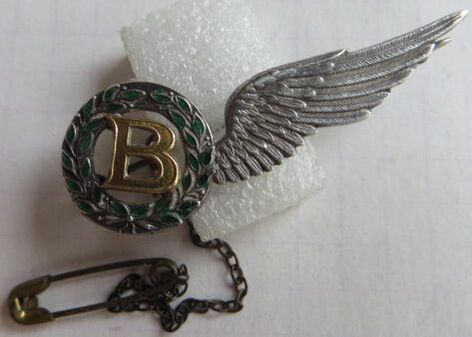
- Opposite: A Stirling Silver and Gold sweethearts badge in the shape of a Bomb Aimers half wing or Brevet.
Green enamel to wreath, with a Gold "B" to center and safety chain attached.
Marked "Stirling" and "9ct" to back.
Green enamel to wreath, with a Gold "B" to center and safety chain attached.
Marked "Stirling" and "9ct" to back.
RNZAF Veterans Association Insignia
|
- Above and Opposite: Items belonging to 647400 Frank S Plumtree who served with the RNZAF. Sadly I don't know his details yet, with his service file not yet available.
|
(continued) He seems to have been a member of the Air Gunners and Observers Association, post WW2, and we have his jacket Brevet in Bullion thread and coloured material. It is quiet faded in colour. His Lapel or Tie pin is marker stamped to back to "M & K Ltd", "Silver" and has number "CD88". "M & K Ltd" are Mayer and Kean Ltd of Wellington New Zealand. The ID bracelet is in chromed metal with the details "Plumtree F.S, R.N.Z.A.F Service, No. 647400".
|
|
- Above: A Blazer pocket badge to RNZAF 14th Squadron.
Period active are April 1942 to Jan 1949, Sept 1951 to Dec 2001 and Jan 2015 to now. Fought in the Pacific (WW2), J-Force (Occupation of Japan), Cyprus (1952 - 1955), Singapore (1955 - 1958 - Malaysia Conflict, then 1964 - 1966 operating in North Borneo, Malaysian Peninsular and Hong Kong). It took up a advance training role from 1972 to its disbandment in 2001. In 2015 it was re-established as a Pilot Training Squadron. |
- Above: A Blazer pocket badge to RNZAF Pilot Training Squadron.
Period active was from 1966 to 2015, and the unit was based at RNZAF base Ohakea. Since WW1 Pilot training was carried out through a number of bases around New Zealand. This was greatly expanded for WW2, but after, many closed, with the Flight Training School 1 or FTS1 moving to RNZAF base Ohakea in 1966, when the Pilot Training Squadron was established. This role was transferred to 14th Squadron in 2015 and the unit disbanded. |

- Opposite: A Blazer badge (still on pocket) to 23 Squadron of the Air Training Corps of the Royal New Zealand Air Force.
23 Squadron is based in Nelson, and still going today, as part of the New Zealand Cadet Force.
23 Squadron is based in Nelson, and still going today, as part of the New Zealand Cadet Force.
Fakes and Forgeries
Below is a fake or reproduction Cap badge to the Royal New Zealand Air Force.
- Detail to fron is OK, but off around the crown, and of course the colour is wrong.
- To back a noticible flat area, lacking detail behind crown and top of laurel wreath. Stippling overall to back.
- Two copper wire lugs to back are good, with some originals having this type of lug.
- Size 45mm by 40.5mm.
- Detail to fron is OK, but off around the crown, and of course the colour is wrong.
- To back a noticible flat area, lacking detail behind crown and top of laurel wreath. Stippling overall to back.
- Two copper wire lugs to back are good, with some originals having this type of lug.
- Size 45mm by 40.5mm.








